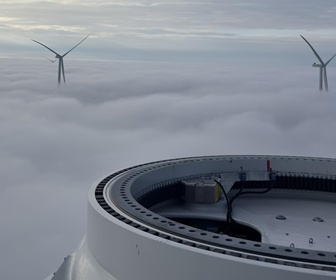AWS Truepower has announced the deployment of remote sensing equipment to capture the spatial and temporal characteristics of atmospheric phenomena within the Electric Reliability Council of Texas (ERCOT) territory as part of the Department of Energy (DOE) sponsored Wind Forecasting Improvement Project (WFIP).
The program is part of a multi-year, multimillion dollar project funded by the US DOE which aims to improve the in short-term wind forecasting. AWS Truepower was selected in late 2010 to lead this US$ 3.2 million project. The first phase of the study includes strategic placement of remote sensing equipment to obtain atmospheric data for a suite of models to compare forecasting results with and without instrumentation. The primary objective of this phase is to demonstrate the value of additional atmospheric observations and model enhancements on wind forecasts across the turbine rotor plane. Ramp events present a risk to grid stability. Grid operators must balance load and generation when wind power production changes by a substantial fraction of the capacity within a few hours. This project meets an emerging national need for more precise wind forecasts than are currently available according to the US DOE. The partners in this study include Texas Tech University, North Carolina State University, University of Oklahoma, National Renewable Energy Laboratory, ERCOT, and consultants MESO, Inc., and ICF International.
The program is part of a multi-year, multimillion dollar project funded by the US DOE which aims to improve the in short-term wind forecasting. AWS Truepower was selected in late 2010 to lead this US$ 3.2 million project. The first phase of the study includes strategic placement of remote sensing equipment to obtain atmospheric data for a suite of models to compare forecasting results with and without instrumentation. The primary objective of this phase is to demonstrate the value of additional atmospheric observations and model enhancements on wind forecasts across the turbine rotor plane. Ramp events present a risk to grid stability. Grid operators must balance load and generation when wind power production changes by a substantial fraction of the capacity within a few hours. This project meets an emerging national need for more precise wind forecasts than are currently available according to the US DOE. The partners in this study include Texas Tech University, North Carolina State University, University of Oklahoma, National Renewable Energy Laboratory, ERCOT, and consultants MESO, Inc., and ICF International.










